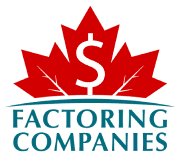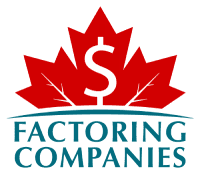
For Canadian businesses in need of immediate cash flow, factoring can be an invaluable tool. But how can you ensure the costs don’t outweigh the benefits? In this guide, we’ll walk you through the basics of navigating factoring costs and share strategies to minimize expenses so you can keep your profit margins as strong as possible.
The Impact of Factoring on Profit Margins
Invoice factoring is a financial tool that helps businesses convert unpaid invoices into immediate cash. Think of it as selling your receivables to a factoring company in exchange for a quick payment.
How Factoring Typically Works
Factoring is a straightforward process that usually involves the following steps.
- Submit Invoices: You provide the factoring company with your unpaid invoices.
- Get Paid Quickly: The company advances a percentage of the invoice value almost immediately. This is typically 60 to 95 percent of the value of the invoice.
- Customer Pays: Your customer pays the full invoice amount to the factoring company.
- Remainder Minus Fees: Once the customer pays, you receive the remaining balance minus the factoring company’s fees.
The Cost of Factoring
Factoring fees vary based on several considerations.
- Discount Rate: This is the primary cost and typically ranges between one and five percent of the invoice value, depending on the industry, the creditworthiness of your customers, and how long the invoice takes to get paid.
- Additional Fees: Some factoring companies charge extra fees for services like credit checks, invoice processing, or monthly minimums. Always read the fine print.
For example, if you’re factoring a $10,000 invoice and have a two percent fee, it will cost you $200. If payment terms stretch beyond the agreed period, the fee could increase.
How Factoring Impacts Profit Margins
While factoring provides immediate access to cash, it comes at a cost, which can affect your profit margins. Here’s a breakdown.
- Reduced Revenue: The fees you pay to the factoring company reduce the total revenue collected from each invoice. For instance, if your net profit margin is 15 percent and you pay a three percent factoring fee, your margin drops to 12 percent.
- Scalable Growth Tool: The trade-off is that you gain liquidity to take on new opportunities, such as buying more inventory or fulfilling larger orders, which can offset the initial fee.
- Industry-Specific Considerations: Businesses with tight margins, like trucking or manufacturing, must evaluate whether the added cost of factoring makes sense compared to other financing options.
Strategies to Mitigate Factoring Costs

Factoring can be a lifeline for businesses, but managing the associated costs is crucial to maintaining profitability. Here’s how you can minimize those fees without sacrificing the benefits factoring offers.
Choose the Right Factoring Company
Not all factoring companies are created equal. Selecting the wrong one can eat into your margins. Here’s how to find the best fit.
- Compare Discount Rates: Rates typically range from one to five percent. Even a difference of one-half percent can significantly impact your bottom line, especially with high invoice volumes.
- Watch for Hidden Fees: Some companies charge for things like credit checks, administration, or minimum monthly invoice requirements. Clarify these up front.
- Find Industry Specialists: Some factoring companies specialize in industries like trucking, staffing, or manufacturing. They may offer tailored solutions or lower rates based on their expertise.
Negotiate Terms
Factoring agreements can often be negotiated. The key is knowing what to ask for.
- Volume Discounts: If your business factors a high volume of invoices, you can often secure better rates.
- Flexible Contracts: Avoid locking into long-term contracts unless they come with benefits like reduced fees. Opt for month-to-month agreements when possible.
- Early Payment Rebates: Some companies offer discounts if your customers pay invoices early.
Highlight your customers’ strong credit histories when negotiating. If your customers have a track record of timely payments, factoring companies may reduce fees because the risk is lower.
Monitor Payment Terms
Factoring fees often increase the longer it takes for customers to pay invoices. Here’s how to keep those costs in check.
- Set Shorter Payment Terms: If feasible, negotiate shorter payment periods with your customers. A net-30 invoice costs less to factor than a net-60 one.
- Follow Up Promptly: Stay proactive with reminders and communication to ensure customers pay on time.
- Quick Win: Use automated invoicing tools to send reminders at key intervals, reducing the chance of late payments and additional factoring costs.
Factor Selectively
You don’t have to factor every invoice. Strategic selection or using spot factoring can save you money.
- High-Risk Customers: Focus on factoring invoices from customers who are slower to pay, reducing your overall exposure to late-payment risks.
- Large Invoices: It might make more sense to factor higher-value invoices, as fees on smaller ones can erode profits faster.
For example, a Québec-based manufacturer might skip factoring small orders from repeat customers with solid payment histories, reserving it for large, new clients where cash flow is critical.
Build a Strong Relationship with Your Factor
Loyalty can pay off.
- Consistent Business: Working with the same factoring company over time can lead to better terms and fewer additional fees.
- Exclusive Partnerships: Some factoring companies offer loyalty rewards, such as discounted fees or priority service, for exclusive arrangements.
- Insider Insight: Let your factor know about upcoming changes in your business, like expected growth or new clients. This can position you to negotiate pre-emptively when your needs shift.
Evaluate Non-Recourse vs. Recourse Factoring
Non-recourse factoring can be more expensive since the factoring company takes on the risk if your customer doesn’t pay. If your customer base is reliable, consider recourse factoring to lower costs.
- Recourse Factoring: Lower fees but requires you to repay the factor if the customer doesn’t pay.
- Non-Recourse Factoring: Higher fees but includes bad debt protection.
Look at your payment history. If bad debts are rare, recourse factoring might be the smarter, more cost-effective option.
Bundle Services
Some factoring companies offer bundled services, like invoice preparation, collections, or credit checks, for an all-inclusive rate. This can save you money compared to outsourcing these tasks separately.
Factoring Alternatives
While factoring is an excellent way to improve cash flow, some businesses consider alternatives before committing, especially when preserving profit margins are a concern. Here’s a breakdown of common options, their advantages, and the challenges they present compared to factoring.
Bank Loans
Oftentimes, bank loans are the first option businesses think of when they need funds.
Why Businesses Consider Bank Loans
- Rates: Lower interest rates compared to factoring fees.
- Predictability: Fixed repayment schedules for predictable costs.
The Challenges of Bank Loans
- Strict Qualification Requirements: Banks often require collateral, long credit histories, and detailed financials, which can be difficult for startups or businesses in financial distress.
- Slow Process: Loan approvals can take weeks, and that delay can mean lost opportunities for businesses needing quick cash.
- Debt Risk: Loans add debt to your balance sheet, potentially affecting your ability to borrow in the future.
For example, a small business in Alberta might struggle to secure a loan without years of financial statements, leaving factoring as a faster, more accessible option.
Lines of Credit
A business line of credit offers flexible access to funds, which can help manage cash flow fluctuations.
Why Businesses Consider Lines of Credit
- Flexibility: Flexible borrowing and repayment.
- Cost Management: Only pay interest on the amount used.
The Challenges of Lines of Credit
- Limited Availability: Like loans, lines of credit are often only available to established businesses with strong credit.
- Caps on Funding: Credit limits might not be high enough to cover large cash flow gaps.
- Ongoing Maintenance: You’ll need to meet specific financial benchmarks to keep the credit line open.
Merchant Cash Advances (MCAs)
An MCA provides a lump sum of cash in exchange for a percentage of future sales.
Why Businesses Consider MCAs
- Speed: Fast access to funds.
- Access: Approval is less dependent on credit scores.
The Challenges of MCAs
- High Costs: MCAs can have effective annual percentage rates (APRs) exceeding 50 percent, which are far more expensive than factoring fees.
- Unpredictable Payments: Repayment is tied to sales, which can create cash flow uncertainty during slower periods.
Personal Loans or Investments
Some business owners dip into personal savings or borrow from friends and family.
Why Businesses Consider Personal Investments
- Simplicity: No formal application process.
- Flexibility: Flexible repayment terms.
The Challenges of Using Personal Funding
- Personal Risk: Using personal assets to fund a business can jeopardize your financial security.
- Limited Capital: Personal funds rarely provide enough cash for ongoing operational needs.
- Relationship Strain: Borrowing from loved ones can lead to tension if the business struggles to repay.
Supplier Payment Extensions
Negotiating longer payment terms with suppliers can help conserve cash.
Why Businesses Consider Supplier Extensions
- Cash Flow: Keeps funds in the business for longer.
- Costs: No direct costs like interest or fees.
The Challenges of Supplier Extensions
- Limited Negotiating Power: Small businesses may lack the leverage to extend terms significantly.
- Strained Relationships: Asking for extensions repeatedly can damage supplier trust, affecting future business.
- Factoring’s Advantage: Instead of stretching supplier payments, factoring helps you pay them on time, strengthening relationships.
Customer Prepayments
Some businesses request deposits or upfront payments from customers to fund operations.
Why Businesses Consider Customer Prepayments
- Cash Flow: Immediate cash inflow.
- Costs: No interest or fees.
The Challenges of Customer Prepayments
- Customer Resistance: Many clients prefer to pay after receiving goods or services.
- Competitive Disadvantage: Requiring prepayment can deter new customers, especially in industries where competitors offer flexible terms.
Crowdfunding
Platforms specializing in crowdfunding like Kickstarter or GoFundMe allow businesses to raise funds from a broad audience.
Why Businesses Consider Crowdfunding
- Control: Access to funds without giving up equity.
- Marketing Exposure: Brands can build awareness through crowdfunding campaigns.
The Challenges of Crowdfunding
- Uncertainty: Success depends on hitting funding goals, which is far from guaranteed.
- Time-Intensive: Running a crowdfunding campaign requires significant effort and time that could be spent running your business.
- One-Off Solution: Crowdfunding isn’t suitable for recurring cash flow needs.
Optimizing Invoice Management
Effective invoice management is the backbone of a business’s cash flow strategy. By improving how you handle invoices, you can reduce your reliance on factoring and cut unnecessary costs. Here’s how to get started.
Streamlining Operations to Reduce Factoring Dependence
Factoring provides liquidity, but reducing how often you need it starts with tightening up your invoicing process.
Standardize Your Invoicing Terms
Use consistent terms, like net-30 or net-15, across all invoices. This helps set clear expectations with customers. Avoid long payment terms like net-90, which are more common in industries like construction but can strain cash flow.
Shorten Payment Cycles
Offer discounts for early payments, such as two percent off if paid within ten days. Use automated follow-ups for overdue invoices to encourage timely payments.
Focus on High-Value Customers
Identify clients who consistently pay on time and prioritize their invoices. For late payers, consider stricter terms or upfront deposits.
Leveraging Technology for Efficient Invoice Processing
The right tools can transform a sluggish invoicing system into a well-oiled machine.
Invest in Invoicing Software
Platforms like FreshBooks, QuickBooks, or Xero streamline the process of creating, sending, and tracking invoices. Look for features like automated reminders, recurring invoice templates, and real-time payment tracking.
Use Electronic Payments
Encourage customers to pay electronically via credit cards, e-transfers, or digital payment platforms. This reduces processing times compared to cheques. Tools like Interac e-Transfer are quick, secure, and widely adopted.
Track Key Metrics
Monitor days sales outstanding (DSO) to measure how quickly you’re converting invoices into cash. Use analytics to identify trends, like which customers or industries take the longest to pay, and adjust your terms accordingly.
Pro Tip: Automated invoicing platforms can integrate with factoring companies, speeding up funding without added admin work.
Train Your Team for Success
Human error is a common cause of delayed payments. Training your team ensures invoices go out accurately and on time.
Double-Check Details
Ensure invoices include everything customers need to process payments, such as purchase order numbers, payment terms, and clear due dates.
Create an Escalation Plan
Equip your team to handle overdue accounts effectively. For example, establish when to send reminders, make calls, or escalate to collections. Inconsistent or unclear invoicing is one of the top reasons payments are delayed. A little attention to detail upfront can save significant time and costs later.
Communicate Clearly with Customers
Good communication helps avoid disputes and accelerates payments.
Confirm Payment Terms
At the start of every relationship, discuss your invoicing process with clients and ensure they agree to the terms.
Follow Up Regularly
Send reminders a few days before invoices are due, and follow up immediately on overdue accounts.
Streamline Dispute Resolution
Invoice disputes are inevitable, but resolving them quickly can prevent cash flow disruptions.
Set Up a Dispute Resolution Process
Assign a point person for disputes and create clear guidelines for addressing issues. Resolve discrepancies within a set timeframe, such as 48 hours, to avoid compounding delays.
Keep Records
Store contracts, delivery confirmations, and proof of service electronically to back up your invoices in case of disputes.
Adopt a Customer-Centric Approach
Happy customers are more likely to pay on time. Small changes to your invoicing process can improve their experience.
Flexible Payment Methods
Offer multiple ways to pay, such as credit card, e-transfer, or ACH, so customers can choose what’s easiest for them.
Clear and Professional Invoices
Use simple, jargon-free language. Include your contact info so customers can reach you with questions.
Building Stronger Customer Relationships
Strong customer relationships are more than just good business. They’re a cornerstone of healthy cash flow. By fostering trust and accountability with your clients, you can reduce the need for factoring and improve your financial standing. Let’s explore how prompt payments and effective credit control measures can make all the difference, alongside other strategies.
How Prompt Payments Can Alleviate the Need for Factoring
Late payments are one of the biggest drivers of factoring dependence. Here’s how building a payment-friendly relationship with your customers can reduce that reliance.
Communicate Clear Payment Terms
Right from the start, set expectations about due dates, late fees, and any discounts for early payments.
Foster Open Dialogue
Keep the lines of communication open with your customers. If they’re struggling with cash flow, negotiate partial payments or adjusted terms rather than waiting indefinitely.
Reward Reliability
Offer incentives for consistent on-time payers, like volume discounts or preferential treatment on future orders.
Implementing Effective Credit Control Measures
Strong customer relationships don’t mean extending credit to everyone. Implementing credit control measures can help you strike the right balance between trust and risk.
Run Credit Checks
Before onboarding a new client, review their payment history, credit rating, and financial stability. In Canada, credit bureaus like Equifax and TransUnion provide reliable reports.
Set Credit Limits
Tailor credit limits to each client based on their financial profile. For higher-risk customers, consider requiring deposits or upfront payments.
Monitor Payment Trends
Keep an eye on existing clients’ payment behaviours. If a previously reliable customer starts paying late, address it early before it becomes a pattern.
Pro Tip: Use invoicing software with credit management features to flag at-risk accounts and automate reminders for overdue payments.
Build Trust Through Transparency
Customers are more likely to pay on time when they trust your business. Transparency in your dealings goes a long way.
Share Detailed Invoices
Make sure invoices include itemized charges, clear payment terms, and no hidden fees. This avoids confusion and disputes.
Be Upfront About Policies
Clearly communicate policies on returns, refunds, and late fees. Customers appreciate knowing what to expect.
Offer Flexible Payment Options
Making it easy for customers to pay is another step toward reducing delays and improving relationships.
Provide Multiple Payment Methods
Offer electronic transfers, credit card payments, and digital payment options like Interac e-Transfers, which are particularly popular in Canada.
Align Payment Terms with Customer Needs
For key clients, consider adjusting payment schedules to align with their cash flow cycles while balancing your own needs.
Maintain Proactive Communication
A little proactive effort can go a long way in strengthening customer relationships and encouraging timely payments.
Regular Check-Ins
Reach out to your customers periodically, not just when you’re chasing invoices. A simple “How’s business going?” shows you value the relationship beyond the transaction.
Send Friendly Reminders
Automated payment reminders can be helpful, but adding a personal touch, such as a quick call or email, for long-term clients reinforces the connection.
Establish a Collaborative Approach to Disputes
Disputes are inevitable, but how you handle them can either strengthen or damage the customer relationship.
Resolve Issues Quickly
Respond to disputes within 24 to 48 hours. This prevents delays from compounding and reassures your client that their concerns are a priority.
Find Win-Win Solutions
Collaborate with the customer to find a middle ground. Whether it’s adjusting an invoice or offering a payment plan, mutual goodwill can go a long way.
Financial Planning to Preempt Factoring
Factoring can be a lifesaver when cash flow is tight, but the ultimate goal for most businesses is financial independence. Strategic financial planning can help reduce reliance on factoring and strengthen your company’s overall financial health. Here’s how to get started.
Master Your Cash Flow Forecasting
Accurate cash flow forecasting is the cornerstone of financial planning. Knowing when money will come in and go out allows you to anticipate and bridge potential gaps.
Track Income and Expenses
Use financial software to monitor incoming payments, recurring expenses, and seasonal trends. Identify periods when cash flow is tight and plan proactively.
Plan for the Unexpected
Build a buffer for emergencies. A general rule of thumb is to keep three to six months of operating expenses in reserve.
Diversify Revenue Streams
Relying heavily on one source of income can lead to instability, making factoring a necessity during slow periods.
Expand Your Offerings
Introduce complementary products or services that appeal to your existing customer base.
Target New Markets
Explore opportunities in other industries, regions, or demographics to balance fluctuations in demand.
Negotiate Better Payment Terms
Factoring often becomes necessary when customers take too long to pay. Strategic negotiation can mitigate this issue.
Ask for Upfront Payments
For large projects, request deposits or progress payments to cover your initial costs.
Shorten Payment Terms
Shift from net-60 to net-30 payment terms where possible. Many customers are open to shorter timelines if expectations are clear.
Reward Prompt Payments
Offer small discounts, such as two percent off for payments made within ten days.
Cut Unnecessary Expenses
Streamlining operations frees up cash that can reduce dependence on factoring.
Audit Your Costs
Review recurring expenses, such as subscriptions, utilities, and vendor contracts. Negotiate better terms or eliminate non-essentials.
Improve Efficiency
Automate repetitive tasks, optimize inventory management, and reduce waste in production processes.
Strengthen Your Invoicing Process
Efficient invoicing minimizes delays and improves cash flow predictability.
Automate Invoicing
Use invoicing software to send bills promptly, track payments, and send reminders.
Clarify Terms
Ensure every invoice includes clear payment terms, due dates, and accepted payment methods.
Establish an Emergency Fund
An emergency fund reduces the need to rely on factoring during financial crunches.
Set a Savings Goal
Aim to save a percentage of your profits each month until you have a sufficient reserve.
Separate Your Funds
Keep your emergency savings in a dedicated account to avoid using them for routine expenses.
Monitor Key Financial Metrics
Keeping an eye on financial health metrics helps you identify and address issues before they escalate.
Track Your Days Sales Outstanding (DSO)
DSO measures how quickly you’re converting invoices into cash. A high DSO indicates potential payment delays.
Monitor Profit Margins
Ensure your pricing and cost structures leave room for healthy profits after factoring in overhead and financing costs.
Maximize Profit with the Right Factoring Company
Although the immediate cash flow factoring provides is typically enough benefit to outweigh any costs, it’s essential to work with a company that offers competitive rates and services that will help your business succeed. To get started, request a complimentary rate quote.

FAQs on Navigating Factoring Costs
How can I choose the best factoring company for my business?
Start by comparing discount rates and additional fees. Look for a company with experience in your industry, as they may offer tailored solutions and better terms. Verify their reputation through reviews and testimonials. Choose a factoring company with transparent contracts and no hidden charges. Ensure they provide good customer service and flexibility in their terms.
Are factoring fees tax-deductible in Canada?
Yes, factoring fees are typically considered a business expense in Canada and can be deducted when filing taxes. Be sure to track all related costs, including the discount rate and any additional fees charged by the factoring company. Consult with your accountant to ensure proper documentation and compliance with Canada Revenue Agency (CRA) guidelines.
What strategies can businesses use to negotiate lower factoring fees?
To negotiate lower fees, highlight your customers’ strong payment histories, which reduce risk for the factor. Offer high invoice volumes for volume discounts, and negotiate flexible terms like early payment rebates. Avoid long-term contracts unless they come with better rates. Be clear about your needs and shop around to use competing offers as leverage.
How does improving invoice management reduce factoring dependence?
Streamlining your invoicing process ensures payments arrive faster, reducing the need for factoring. Use invoicing software to send accurate invoices promptly and set clear payment terms. Automated reminders and multiple payment options, like Interac e-Transfer, also encourage timely payments. These steps improve cash flow predictability, cutting reliance on external funding.
What alternatives to factoring are available for small businesses in Canada?
Alternatives include bank loans, lines of credit, merchant cash advances, and payment extensions from suppliers. Some businesses also use personal savings, crowdfunding, or request upfront payments from customers. Each option has drawbacks, such as strict qualification requirements or high costs, making factoring a faster and more flexible choice for many.
What is the difference between recourse and non-recourse factoring, and how does it impact costs?
Recourse factoring requires you to repay the factor if your customer doesn’t pay, making it less expensive. Non-recourse factoring costs more because the factoring company assumes the risk of non-payment. If your customers have strong credit histories, recourse factoring can save you money while providing liquidity.
Can offering early payment discounts to customers help reduce the need for factoring?
Yes, early payment discounts like “2/10 net-30” (two percent off if paid within ten days) incentivize prompt payments, improving cash flow. This reduces reliance on factoring by closing cash flow gaps sooner. Ensure the discount doesn’t cost more than your factoring fees to maintain profitability.
What is the average discount rate for factoring in the Canadian market?
The discount rate for factoring in Canada typically ranges between one and five percent of the invoice value. The exact rate depends on factors like the payment terms, your industry, and your customers’ creditworthiness. Lower-risk invoices often secure better rates, so providing strong customer credit histories can help.
How can better cash flow forecasting help minimize the need for factoring?
Accurate cash flow forecasting helps you anticipate when funds will be tight, allowing you to plan ahead. By adjusting expenses, negotiating terms with suppliers, or securing low-cost funding in advance, you can avoid relying on factoring. Use software tools to track payment cycles and identify trends for more precise planning.

About Factoring Companies Canada
Related Articles
Get an instant factoring estimate
Factoring results estimation is based on the total dollar value of your invoices.
The actual rates may differ.
CLAIM YOUR FREE FACTORING QUOTE TODAY!
PREFER TO TALK?
You can reach us at
1-866-477-1778
Get an instant factoring estimate
Factoring results estimation is based on the total dollar value of your invoices.
The actual rates may differ.
CLAIM YOUR FREE FACTORING QUOTE TODAY!
PREFER TO TALK? You can reach us at 1-866-477-1778











